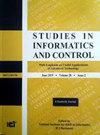Deep Constrained Clustering with Active Learning
IF 1.1
4区 计算机科学
Q4 AUTOMATION & CONTROL SYSTEMS
引用次数: 0
Abstract
: Deep semi-supervised clustering approaches, which use supervised data to help the deep neural network acquire cluster-friendly representations, have improved clustering performance and simultaneously increased the semantic value of the clustering results. However, the majority of them cannot utilize both labeled and unlabeled data completely. Furthermore, in these methods, the supervised information is either passively acquired or randomly picked, which may be insufficient, redundant, and even decrease the performance of these models. This paper provides a deep semi-supervised clustering technique with active learning to address the problems mentioned above. The procedure is divided into two sections: model training and data labeling. In the model training section, the paired data is used to train the pseudo-Siamese network, and then the sub networks of the pseudo-Siamese network are fine-tuned using self-training. A new query strategy is devised in the data labeling part, which combines the traditional uncertainty query strategy with the deep Bayesian uncertainty query strategy. Finally, substantial tests are conducted to confirm the utility of the suggested approach on certain real-world data sets. The results of the tests demonstrate that both the suggested method and query strategy are practical.基于主动学习的深度约束聚类
本文章由计算机程序翻译,如有差异,请以英文原文为准。
求助全文
约1分钟内获得全文
求助全文
来源期刊

Studies in Informatics and Control
AUTOMATION & CONTROL SYSTEMS-OPERATIONS RESEARCH & MANAGEMENT SCIENCE
CiteScore
2.70
自引率
25.00%
发文量
34
审稿时长
>12 weeks
期刊介绍:
Studies in Informatics and Control journal provides important perspectives on topics relevant to Information Technology, with an emphasis on useful applications in the most important areas of IT.
This journal is aimed at advanced practitioners and researchers in the field of IT and welcomes original contributions from scholars and professionals worldwide.
SIC is published both in print and online by the National Institute for R&D in Informatics, ICI Bucharest. Abstracts, full text and graphics of all articles in the online version of SIC are identical to the print version of the Journal.
 求助内容:
求助内容: 应助结果提醒方式:
应助结果提醒方式:


